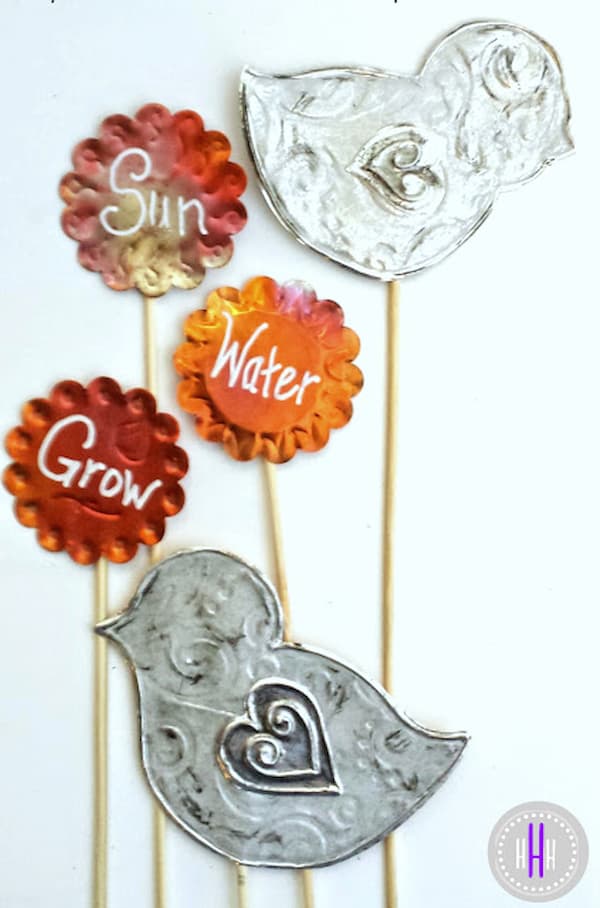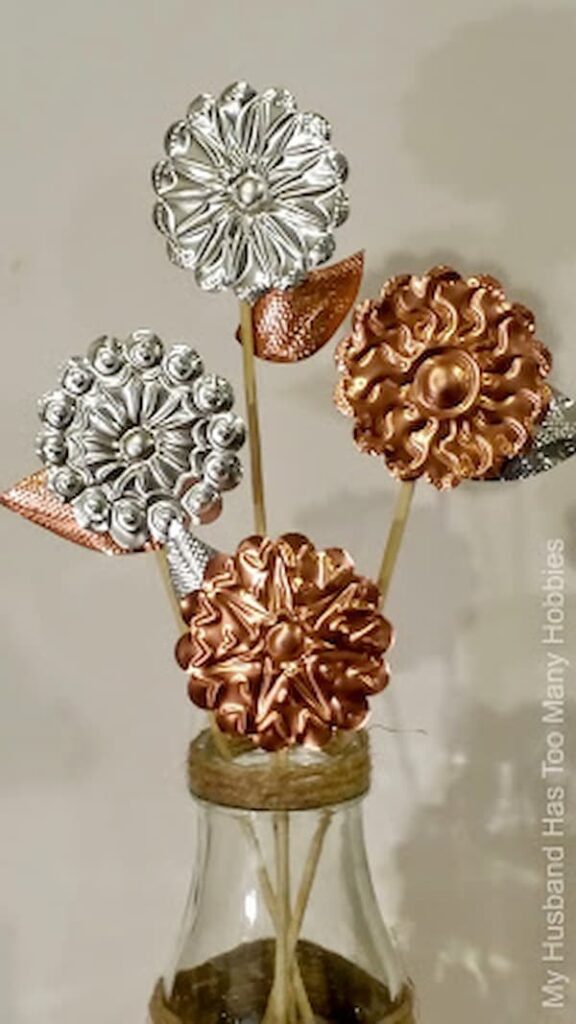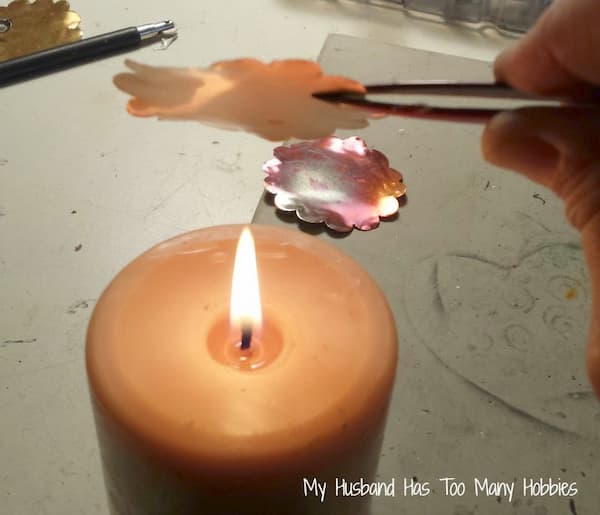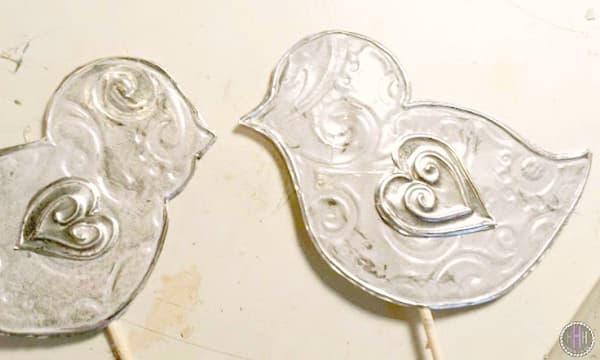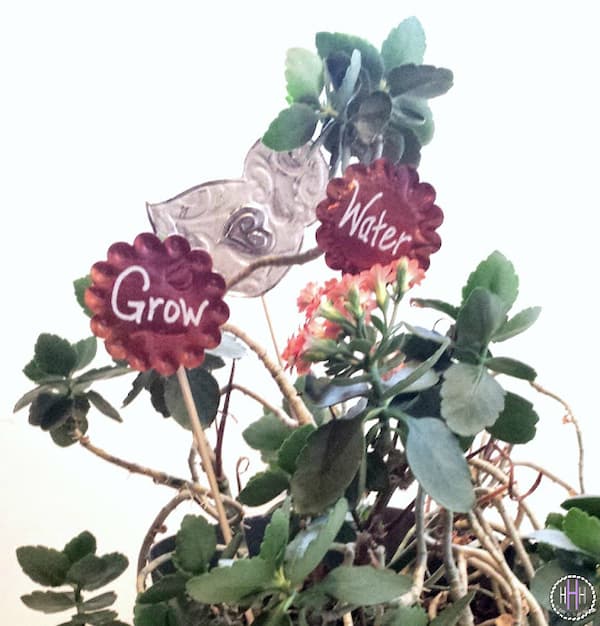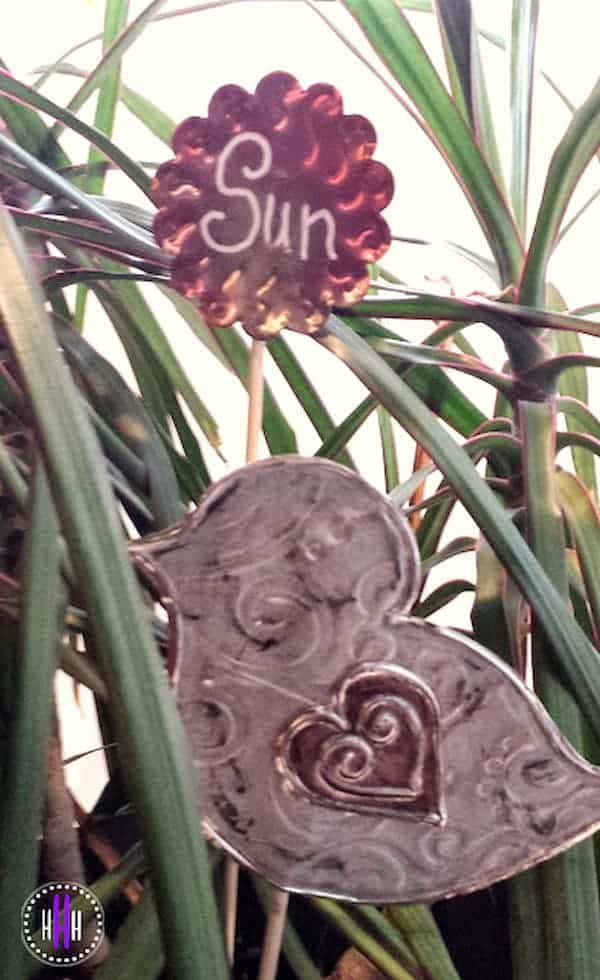How To Make DIY Decorative Flower Pot Stakes
Supplies Used:
- copper tinted aluminum
- glue
- candle
- bamboo skewers
For the birds, I drew a pattern on a piece of paper and transferred it to the metal. I used an embossing folder to add quick texture. These birds were lightly painted white and then dabbed with a paper towel to give them an antique look. I also added a little black paint and dabbed that as well. The wings are hand embossed, cut out and glued on with E6000 glue.

